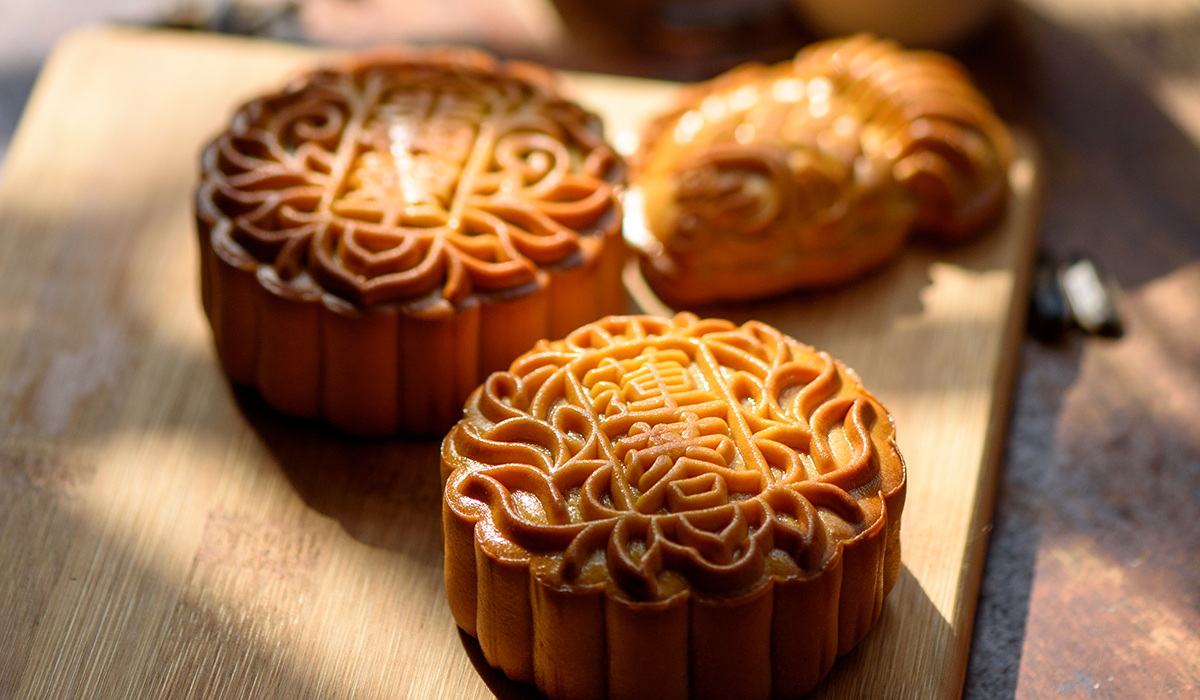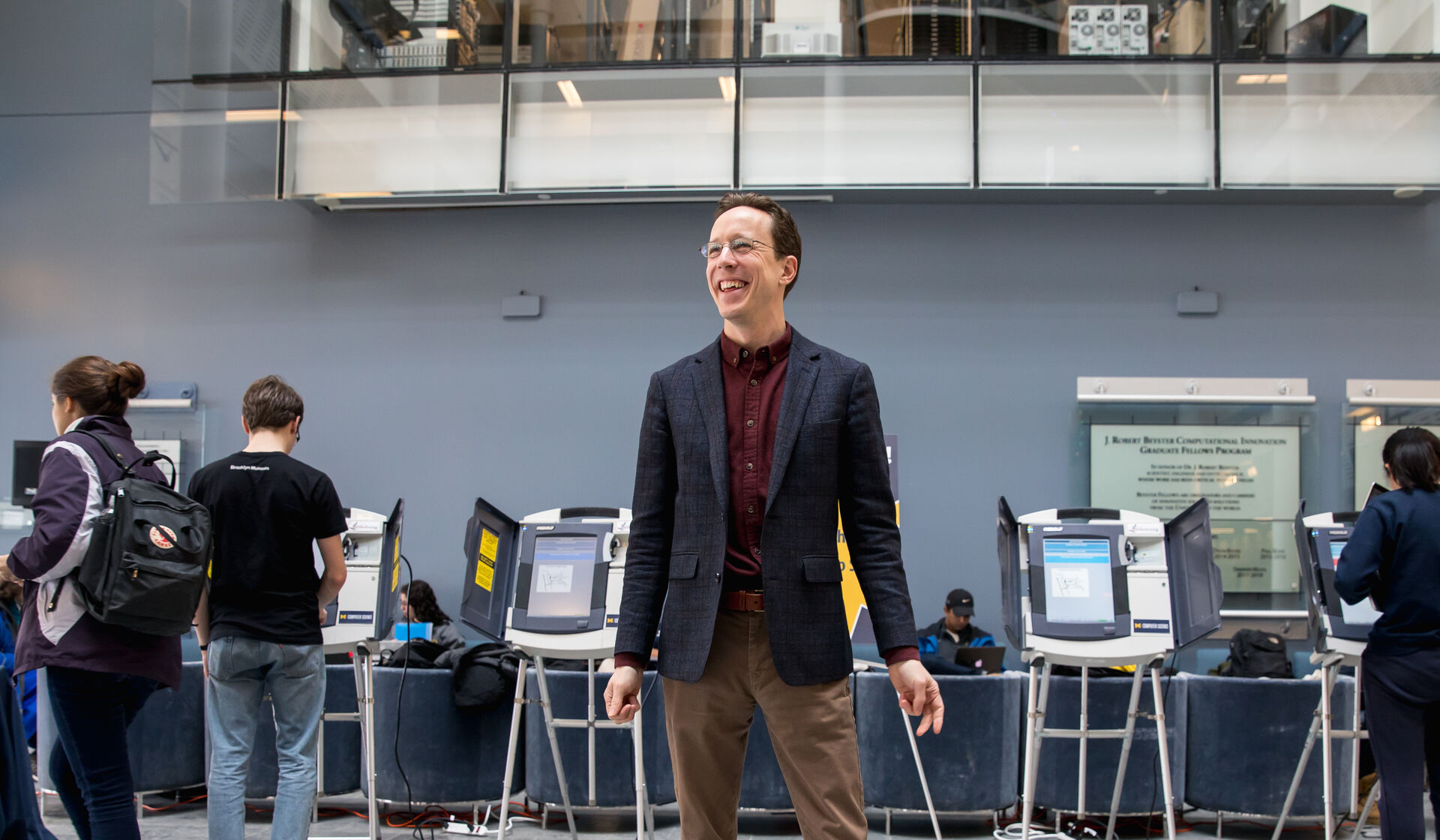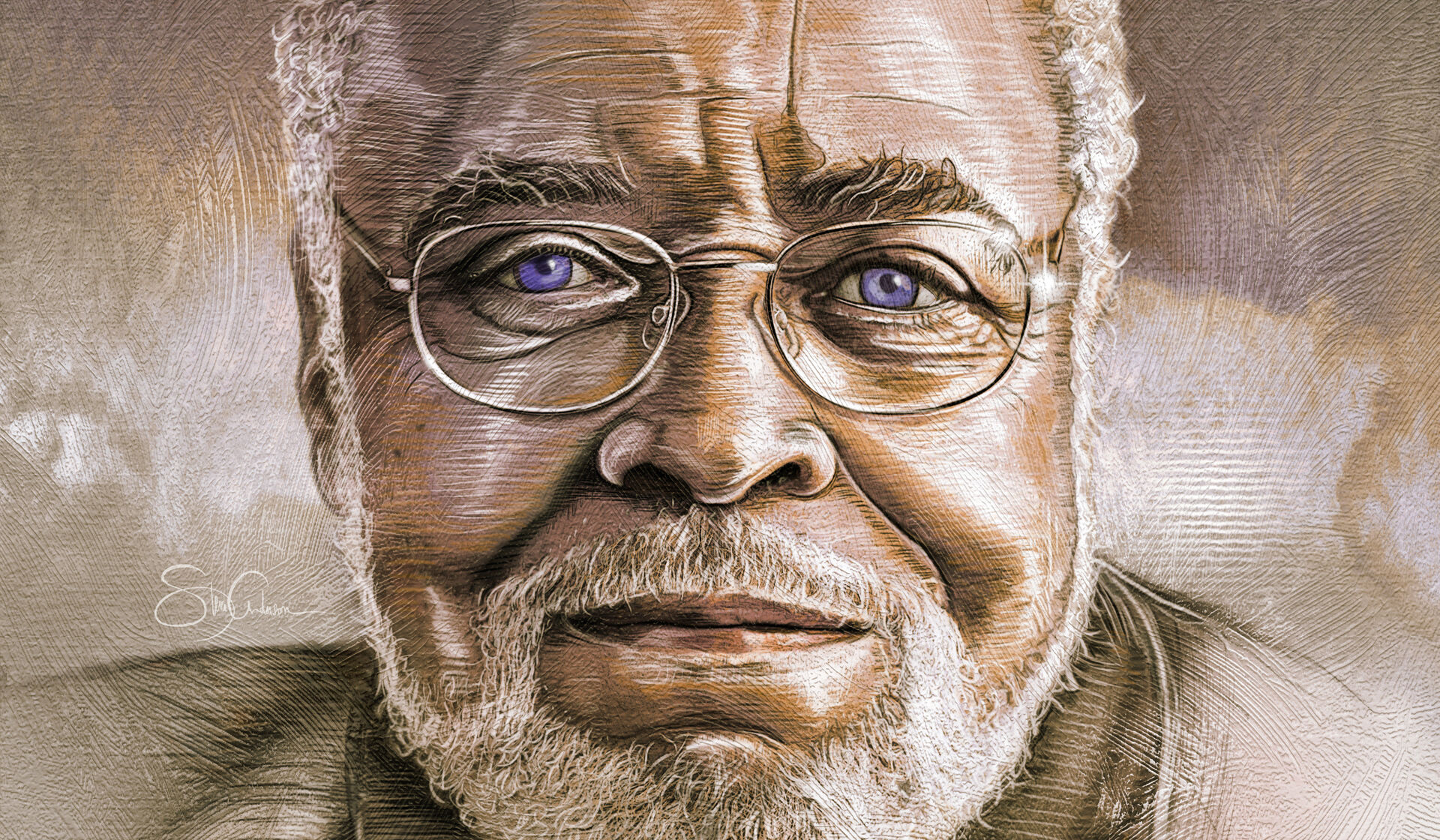Mooncakes are calorie bombs. And when I found out just how much so, I immediately got to researching “maximum edible calorie density.” These treats are ubiquitous in many Asian communities around this time of year. Their appearance signals that Mid-Autumn Festival is near about as precisely as the appearance of Christmas décor anticipates Santa Claus shimmying down chimneys.
The Mid-Autumn Festival is celebrated on 15th day of the eighth month of the Chinese lunar calendar, landing somewhere between early September and early October in the Gregorian calendar. It always falls within two days of a full harvest moon, which is apparently close enough to have honored and worshipped the moon on the occasion for more than 1,000 years.
Mooncakes are smallish, usually 2 to 4 inches across, feel heavier than they possibly should, and come in endless varieties, with fillings ranging from lotus seed paste to durian, from salted duck egg to seaweed, from pork to chicken, and lately from caviar to black truffle to “impossible meats.” They’re usually round and, aside from the obvious eponymic lunar resemblance, such roundness supposedly symbolizes a panoply of virtuous ideals about unity, family, harmony, good fortune, prosperity, and completeness.
As with most culinary traditions that date back hundreds or thousands of years, the mooncake origin story and the pastry’s association with the Mid-Autumn Festival are murky, a muddled stir-fry of folklore, forensic research, and fan fiction.
In one of the more dramatic and fanciful renderings, secret insurgent messages were hidden inside mooncakes, coordinating a violent uprising on the day of the Mid-Autumn Festival that was instrumental in overthrowing Mongol rule, leading to the establishment of the Ming Dynasty.
Miranda Brown, U-M professor of Chinese Studies, believes the mooncake’s origins probably predate Mongol rule by hundreds, if not thousands, of years. She adds that the eerie similarity to maamoul (a Middle Eastern stuffed cookie) and the fact that wheat was, at the time, largely imported, suggest that the Silk Road was the mooncake’s first course into China.
Another morsel in mooncake mythology involves Chang’e, the Chinese goddess of the moon, and her tragic love with husband Houyi, the hero archer who shot down nine of the earth’s 10 suns, sparing us mortal denizens from infernal suffering.
As with most culinary traditions that date back hundreds or thousands of years, the mooncake origin story and the pastry’s association with the mid-autumn festival are murky, a muddled stir-fry of folklore, forensic research, and fan fiction.
These dense delicacies are usually given as gifts and often given to acknowledge and reinforce hierarchical relationships and partnerships in social and professional realms. U.S. Rep. Grace Meng, ’97, an Alumni Association board member, told me she buys “X number” of mooncakes each year and starts the distribution waterfall with her grandparents and their close friends and works her way down to her parents and their friends. Any remaining mooncakes are usually shared with her friends.
Neither Rep. Meng nor I have tried making mooncakes from scratch. Actually, according to Professor Brown and much to my surprise, making mooncakes was probably not a widespread family tradition early on because, aside from being a laborious endeavor, wheat would have been a specialty good for much of China and most Chinese households simply didn’t have ovens.
Because the thought of making them by hand isn’t widely appetizing, these dense pastries are big business, with sales approaching $3 billion per year in China alone, despite the once-a-year seasonality. The fully baked mooncake industry teems with culinary innovations designed to suit every traditionalist palate or whimsical curiosity.
Prices tend to vary mostly according by the quality and design of packaging, which typically accounts for far more than the cost of the mooncake itself, but star ingredients and high-profile collaborations can also take the cake these days. No-frills versions can start around a reasonable $1 a pop, but eccentric, luxurious packages can skyrocket to thousands of dollars. Not only has the mooncake gift-giving tradition been flambéed for generating hundreds of millions of dollars in packaging waste, it doubles as an opportunity for corruption in a favor economy—think piles of cash in lieu of packing peanuts. The mooncake tradition persists, even if it’s occasionally dinged by environmental sustainability or corruption concerns.
What launched me down this sleuthing rabbit hole—Chang’e has a famous leporine companion on the moon, by the way—was trying to figure out how, with a pandemic, do-it-from-home work ethic, an ancient holiday could become so synonymous with the culinary tradition that purportedly pays homage. It feels like the pastry pulled off some kind of spooky, full-moon body-swap whereby the Mid-Autumn Festival now celebrates the mooncake.
Of course, my amateur forage yielded no definitive answers. And mooncakes aren’t singular in this respect. For some revelers, turkey on Thanksgiving and king cakes on the Epiphany have accomplished this trick, where a single culinary tradition has wrangled the spotlight from the underlying occasion. Others have suggested latkes for Hanukkah, tang yuan for Lunar New Year, and kutia on Eastern European Christmas tables as having performed this feat of stealing the celebratory mic. I can neither confirm nor deny these are solid leads, as they’re firmly outside my cultural familiarity. But as edible clues, they are all the more reason to investigate. That said, I can feel my spider sense tingling, warning me that celebrating other cultures’ holidays through food alone can start to sound like inappropriate appropriation. So tread lightly, fellow epicurean detectives.
Oh, and for the record, a typical mooncake weighs in at about 200 grams, with a whopping 1,000-calorie count. The maximum edible caloric punch for 200 grams is about 1,800. I’ve heard that some mooncakes now come with “this is not a low-calorie food”-style warnings against overindulgence.

JOHN WANG, ’03, is the founder of Queens Night Market in New York City and the co-author, with wife Storm Garner, of the award-winning cookbook “The World Eats Here” (The Experiment, 2020).





